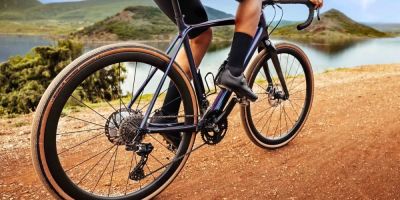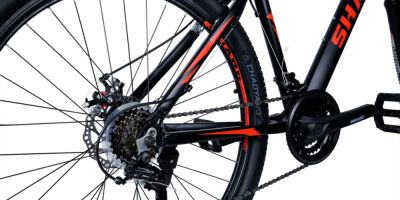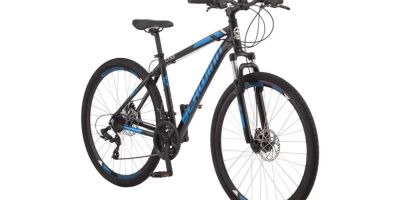All-Mountain Bike with Long Travel Suspension: The Ultimate Ride for Adventurers
As someone who’s always been passionate about cycling and mountain biking, I can confidently say that finding the right bike for all-mountain riding is a game-changer. One of the best decisions I’ve ever made as a rider was choosing an all-mountain bike with long travel suspension. For years, I struggled with bikes that were either too stiff or not responsive enough for the varied terrain I loved to ride. But once I made the switch to an all-mountain bike with long travel suspension, it was like my whole riding experience opened up. These bikes provide the perfect balance of comfort, control, and capability, allowing me to tackle everything from rocky descents to steep climbs with ease. If you’re considering getting into the world of all-mountain biking, here’s everything you need to know about all-mountain bikes with long travel suspension and why they could be the perfect fit for you.

Mike's Bikes of Berkeley
1824 University Ave, Berkeley, CA 94703, USA
1. What is an All-Mountain Bike?
First things first, let’s break down what exactly an all-mountain bike is. These bikes are designed to handle a wide variety of terrain and riding styles. Whether you’re tackling steep descents, technical terrain, or climbing rocky paths, an all-mountain bike is built to do it all. It’s the Swiss Army knife of the biking world, offering a balance between downhill capability and climbing efficiency.
What sets all-mountain bikes apart from other types of bikes is their ability to handle rough, challenging trails without compromising too much on uphill performance. Typically, all-mountain bikes have slightly longer travel suspension than trail bikes but aren’t as extreme as downhill bikes. This makes them perfect for riders who want to experience the full spectrum of mountain biking, from adrenaline-pumping descents to challenging climbs.

Mike's Bikes of Berkeley
1824 University Ave, Berkeley, CA 94703, USA
2. Why Long Travel Suspension is Key for All-Mountain Bikes
One of the defining features of all-mountain bikes is their long travel suspension. The “travel” of a suspension refers to how much the suspension can compress or move when encountering bumps, jumps, or obstacles. For all-mountain bikes, long travel suspension typically refers to forks with 140mm to 170mm of travel at the front, and rear shocks with similar ranges.
Why does this matter? Long travel suspension provides a smoother ride over rough terrain, absorbing impacts from rocks, roots, and uneven ground. This is especially crucial for all-mountain biking, where the trails can vary greatly from smooth, flowing singletrack to technical, rocky sections that demand a suspension that can handle the shocks without bottoming out.
I remember the first time I took my all-mountain bike with long travel suspension down a steep, rocky descent. The bike’s suspension soaked up the impacts, keeping the ride smooth and stable, while allowing me to maintain control even when the trail became more technical. The ability to plow through rough terrain without feeling beaten up or losing control made all the difference, and it’s one of the reasons I wouldn’t go back to any other type of bike.
3. The Advantages of Long Travel Suspension on Steep Descents
When you’re riding steep, rocky descents, you need a bike that can handle the shock and provide control. Long travel suspension shines in these situations. With more travel, the suspension can absorb bigger hits, allowing you to ride faster while maintaining control. On rough downhill trails, I’ve been able to navigate through rock gardens, roots, and drops with confidence, thanks to the long travel suspension.
One thing I’ve noticed is that a bike with longer suspension can also help with traction on loose or muddy surfaces. The ability to keep the wheels in contact with the ground, even when hitting obstacles or going over rough patches, ensures a smoother ride and better control. For riders who love downhill or enduro-style trails, long travel suspension is a must-have for tackling those technical sections safely and efficiently.
4. The Climbing Challenge: How Long Travel Suspension Affects Uphill Performance
While long travel suspension excels at absorbing impacts on downhill trails, some riders worry that it might make climbing more difficult. And they’re right—long travel suspension can cause a bit of a bobbing effect when climbing, which can make pedaling less efficient. However, many modern all-mountain bikes have mechanisms in place, like lockout or compression adjustments, to mitigate this.
When I first started riding an all-mountain bike with long travel suspension, I was surprised by how well it performed on uphill sections, despite the extra travel. While it’s not as efficient as a dedicated cross-country bike, I found that by locking out the suspension or dialing down the compression, I could still climb with ease. The key is adjusting your suspension based on the terrain you’re riding. For uphill climbs, a firmer suspension setting allows you to pedal efficiently without wasting energy.
5. Choosing the Right All-Mountain Bike with Long Travel Suspension
When it comes to choosing the right all-mountain bike with long travel suspension, there are a few factors to keep in mind. First, consider the type of trails you’ll be riding most often. If you’re primarily tackling downhill or technical trails, you might prefer a bike with longer suspension travel, like 160mm or more. However, if you plan to ride a mix of technical descents and some uphill sections, something in the 140mm to 150mm range might be a better fit for the balance of performance and comfort.
Another consideration is the material of the frame. Aluminum frames are durable and more affordable, while carbon frames offer lighter weight and better performance but come at a higher price. Over the years, I’ve tried both materials and found that carbon frames are fantastic for reducing the weight of the bike without sacrificing strength, making them ideal for longer rides or races.
Brands like Trek, Specialized, and Yeti are well-known for producing some of the best all-mountain bikes with long travel suspension. Depending on your budget and preferences, you can find a bike that suits your needs, whether you’re a beginner or an experienced rider.
6. Maintenance Tips for All-Mountain Bikes with Long Travel Suspension
Taking care of your all-mountain bike’s suspension is crucial to maintaining its performance. Over time, suspension forks and shocks can wear out, so it’s important to keep them clean and properly lubricated. I make it a habit to regularly check my suspension for any signs of damage or leakage, especially after a muddy or wet ride.
Additionally, make sure to adjust your suspension settings to suit the terrain. It’s also a good idea to have your suspension serviced by a professional mechanic periodically to ensure it’s working optimally. Proper care will extend the life of your bike and ensure you continue to get the best performance out of your long travel suspension.










